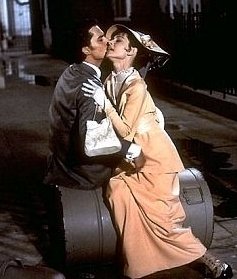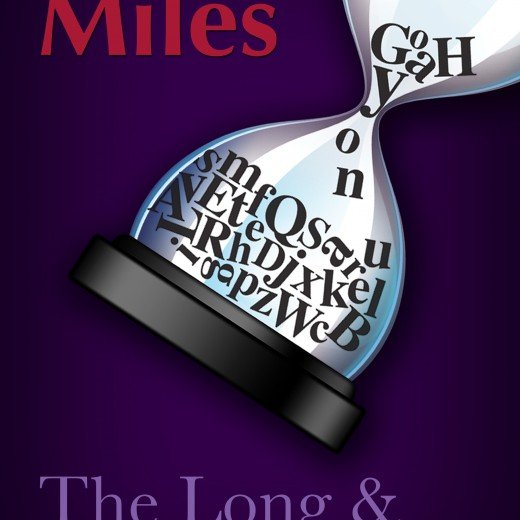SHOW vs TELL – What the he … heck? by Author Carol Malone
 Today we welcome back our adventurous author, Carol Malone who is stopping by to chat with us today about SHOWing VS TELLing. Do you know the difference? Enjoy!
Today we welcome back our adventurous author, Carol Malone who is stopping by to chat with us today about SHOWing VS TELLing. Do you know the difference? Enjoy!
***
When editors and critiquers first started reading through my precious manuscripts, I got a lot of “Show, don’t tell,” scrawled across my pages in blood-red ink. And of course, I thought, What the h@#l. What does “Show don’t tell” mean? No one explained it precisely, they all expected me to glean the meaning from the insufficient information they didn’t bother to offer me.
Even Lerner and Loewe knew you had to “Show Me.” Check out the lyrics from My Fair Lady:
Words! Words! Words! I’m so sick of words!
I get words all day through; first from him now from you!
Is that all you blighters can do?
Don’t talk of stars burning above;
if you’re in love, Show Me!
Tell me no dreams filled with desire.
If you’re on fire, SHOW Me!
When we write our novels, how do we SHOW not TELL our character’s emotional reactions?
I admit, and please don’t tell anyone, it has taken me nearly seven years to finally put a face to the “SHOW don’t TELL” monster. “SHOW don’t TELL” was explained to me in such a way that I finally slapped my forehead and said, “By jove, I think she’s got it!”
SHOWING and not TELLING is about explaining the emotional part of your story so the reader can feel your character’s experience deeply. We want them to walk a mile in their hearts. This is extremely important to me as a romance writer. I want my readers to cheer for my characters, feel their loss, or experience the same joy my hero and heroine feel when they fall in love. What I want is sharp, emotionally charged writing.
I explained in my last month’s post about using enneagrams to discover who your characters are and what their personality traits say about them. Laurie Schnebly wrote “Believable Characters: Creating with Enneagrams.” Terrific book. I keep it next to my keyboard. From this base of sympathetic understanding, you’ll be able to identify why your characters cry at sad movies, and TV commercials, and cheer for the underdog. Or you can see your hero as a leader, unflappable and unable to connect emotionally with the heroine until he learns humility. So how do you SHOW that in writing?
“That’s the real trick,” as Han Solo said to Luke Skywalker. Is there a difference between TELLing the reader what your characters feels and actually letting your reader experience the character’s emotional responses? Oh, yeah. Big difference, actually. I have taken four workshops from Laurie Sanders, author, editor at Black Velvet Seductions, and a fabulous teacher on the subject of SHOWing VS TELLing, and what she calls this impact we’re searching for is “the depth of characterization.” But she’s not talking about physical descriptions or even the character’s likes, dislikes or background. It’s much deeper than that.
See if you can tell the difference between these two passages.
“Brian’s attitude makes me so angry,” Delia said.
“I know what you mean, Del. He’s a jerk. That’s why I stopped dating him,” Trish said.
“I know. Right? He’s such a dog.”
Without SHOWing emotion, you wouldn’t know these women felt anything for Brian other than what you’re told. See if this is better.
Delia gripped the handle of her purse until her fingers turned white. “Brian’s attitude makes me so angry.”
“I know what you mean, Del.” Trish jerked it open causing the bottles on the shelf to rattle. “He’s a jerk. That’s why I stopped dating him.”
Delia’s hair whipped into her eyes when she shook her head. “I know. Right? He’s such a dog.”
I know that’s rough, but can you see the difference? In the first example I’m TELLing you how the girls feel about Brian. Can you see in the second example how it’s written differently to SHOW you their emotional state through their actions?
This is what Laurie told the workshop attendees in my class. Emotions are “first experienced as physical sensations then we ascribe the emotional meaning to them.” There are four types of experiences we can use to SHOW our characters responses. “They are: mental, physical, emotional and spiritual.” These four attributes are the difference between TELLing the reader the character had a reaction to a situation and actually SHOWing them.
“Oh, joy. Rapture,” you might scream. But if it were that easy, why isn’t everyone writing with “the depth of characterization?” Because it’s hard. It’s not just the physical reactions, or even the mental, emotional or spiritual responses as Laurie explains, it’s the way your “character sees the world,” or how they react according to those early-life, branded-on subconscious memories – what makes us … us.
Most writers do character bio charts ad nauseam and still don’t understand their characters, or comprehend what makes them tick. Do they know what turns them on sexually or turns them off. What causes them to tremble when they smell a certain scent or hear a particular song? Or what if they were abused as a child, are there objects, sights, sounds, smells that trigger panic? Not all situations trigger memories or cause a reaction. The trick is to know our characters better than we know ourselves so their reactions come from deep within.
Don’t get me wrong, knowing our hero likes acid rock, has a goat head tattooed on his butt, yet dresses in three-piece suits and works on Wall Street does make him an interesting character, but it doesn’t SHOW our reader who he is deep down. Why does he like acid rock? What does it do for him? What are the memories associated with the music? Did his friend who died of an overdose love the stuff and so he listens to remember his beloved friend? What about the goat head? Is it symbolic of a ritual or a person from his past? Why does he work on Wall Street when his predilections are totally opposite? Did Daddy say he had to make his way in life after he kicked him out of the house, or does he love money because of what it will do for him? Maybe he’s funneling money into an offshore account of the ring leader of a cult of goat head worshipers. Whatever. Can you see how this character’s past influences his present and his reactions?
It’s time to dig deep.
Start to build a lens filter for your characters. Like the lens of a camera, be it a fisheye, a telephoto, or a panoramic lens, it SHOWs you the world through the bending of the glass and gives you varying views depending upon which lens is employed. What I see in no way equals what you see through your eyes. It’s the same for the characters we write into our stories. They all have different lenses.
Where can I learn the concept of SHOWING emotional reactions?
There are lots of experts on the subject. Google it. This site of Beth Barany’s is a great resource for this concept. I also highly recommend you take a workshop from Laurie Sanders if you can. Getting into one can be a challenge as she is like, totally awesome and her classes fill up fast.
At the beginning of her lesson, she told me that SHOWing VS TELLing “isn’t just one technique. It’s more of an idea … a goal … with a series of techniques that can help you achieve the goal of bringing the story to life.”
How can you SHOW your characters with the four reactions to stimuli in your stories to build “the depth of characterization?” What will you do differently to reach into their psyches and rip out the beating heart of their emotional soul?
I’d love to read your thoughts on this subject. We’re about learning here at Writer’s Fun Zone. Will you share what you’ve discovered?
***
ABOUT THE AUTHOR
Carol Malone is passionate about three things – romance, sports, and writing. She combined all three in her 5-Star rated book, “Fight Card Romance: Ladies Night.” She became the first woman to punch her way into the all-male, pulp-fiction genre of boxing, and unloaded a mash-up of fist-pounding action, gripping suspense, and sweet happy-ever-after. Carol entices her readers to scramble into a front row seat for thrill-ride action or swoon to tender passion. If not hammering out new tales, Carol is reading, watching sports on TV, or hanging with her author husband on the coast of California. She loves to chat with her readers about sports and amour, so you’re invited to her website to sign up for the latest in Carol’s news and book releases. You can also LIKE her Facebook page, or send her a Tweet-N-Greet.
Website: http://carolmalone.net/
Facebook: https://www.facebook.com/carolmaloneauthor
Twitter: https://twitter.com/CarolAnneMalone








